A cruise missile ripped through the sky over the Podil district at 10:44 a.m., in the heart of the Ukrainian capital. A few seconds later, the ground beneath our feet shook from the tremendous explosion it caused. It was the third wave of impacts in less than half an hour.and although Ukrainian air defences worked at full capacity on Monday morning, several Russian missiles hit residential buildings, office centres and the children’s cancer hospital in kyiv.
So far, 23 people have been reported dead and more than 70 injured in the capital alone; but there could still be people under the rubble of the children’s hospital. This has been the place most affected by the attack, which It will be remembered as one of the most brutal since the beginning of the large-scale war..
There were gruesome scenes: bloodied children and parents – also injured – carrying them out in their arms amid broken glass and chaos. Medical staff, their gowns covered in blood, tried to help all those affected. And hundreds of people came to the hospital to help in any way they could.
An immense human chain –where rescue technicians, firefighters, soldiers and many young civilians were mixed together– began to remove the rubble by hand of the building that bore the brunt of the impact. Hand by hand, stone by stone, they managed to reach the lower floors in just a few hours.
At that moment, the press and civilian volunteers had been evacuated from ground zero, while several stretcher-bearers rushed in and the sirens of the ambulances began to sound. The commotion at the foot of the bombed building indicated that bodies or wounded people had been found under the rubble, and they did not want those images recorded.
A nurse at a children’s hospital in kyiv, with a head wound and blood on her clothes, tries to help after the Russian attack.
Maria Senovilla
It was not necessary either: The scenes of barbarism provoked by this massive Kremlin attack crossed all the red lines without the need to show bloodied children. The indignation of residents, authorities and even ambassadors of all countries with diplomatic representation in kyiv – who flocked to the site of the impact showing their support and solidarity – was palpable.
Unprecedented solidarity
The word “solidarity” permeated Kiev for the rest of the day. In response to calls for water, fruit for children and various medical supplies, a wave of people began to arrive, carrying jerry cans and bottles, boxes of fruit and the rest of the materials they had asked for.
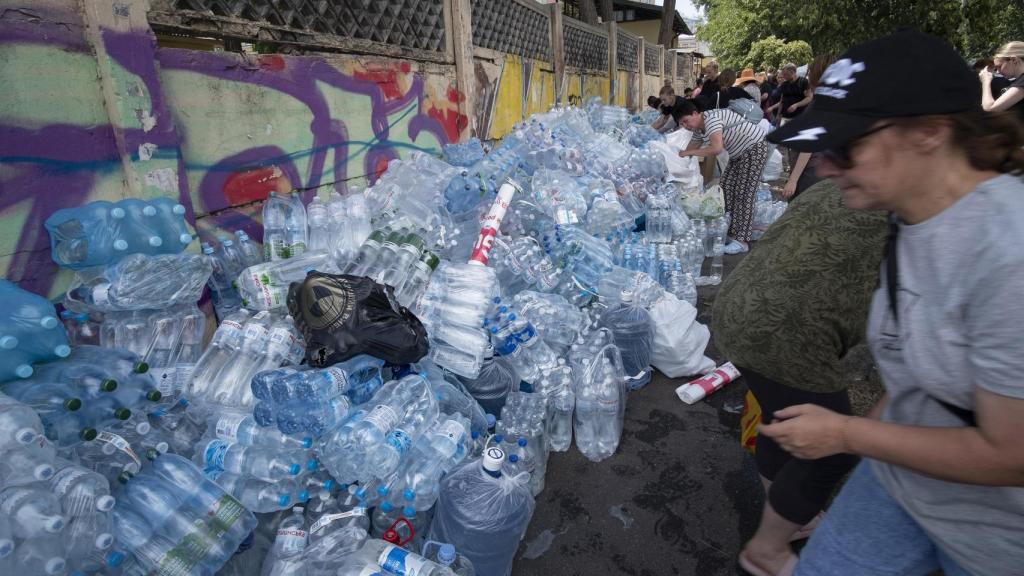
Hundreds of people pour water on the wall of a children’s hospital in kyiv after Russian bombing reduced one of the hospital’s buildings to rubble.
They appeared on all the surrounding streets, walking, because the traffic was cut off for several kilometers around. But that did not stop them. A real human tide will show the best face that could be expected after a bombingSome were pushing shopping carts, loaded to the brim, and leaving everything next to the hospital wall.
With expressions filled with pain and rage in equal parts, and in some cases unable to hold back their tears, people of all ages could be seen. But especially young people and families. A couple carried their baby in their arms, while pushing a stroller loaded with water and food. Some stopped for a moment to gather strength, and to lift the heavy bags again.
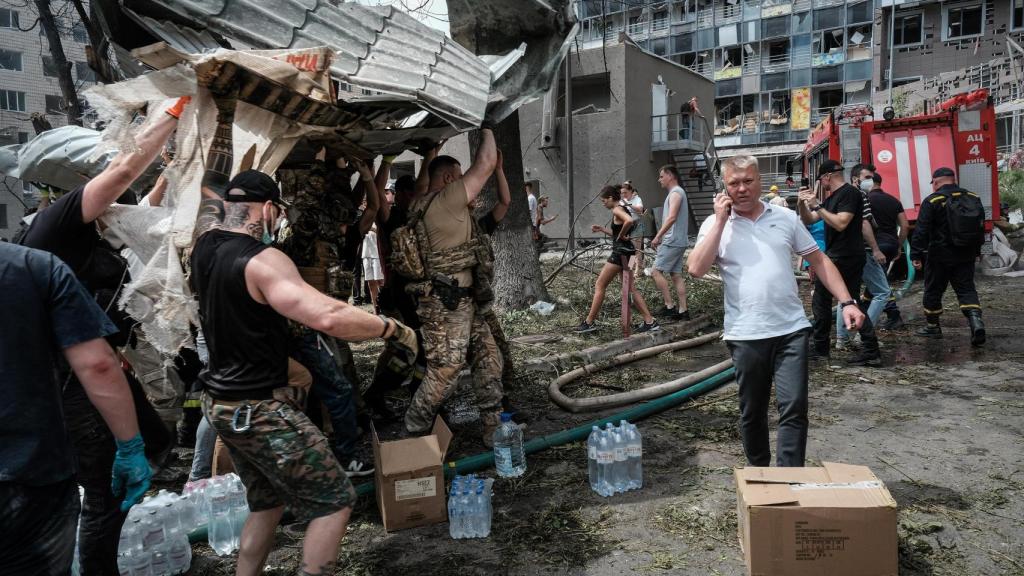
A group of men remove part of the roof of the children’s hospital in kyiv, which was bombed by Russia on Monday morning.
Maria Senovilla
At the same time, from social networks, Dozens of companies and thousands of individuals began collecting funds that exceeded 100 million hryvnias (2.5 million euros) in just a few hours. Hundreds of small businesses joined in and announced that all the money raised for the day would also be donated. The money will be used to rebuild the hospital, buy cancer medicines and to cover any other needs that families may have in the coming days.
Kids with cancer
The Russian missile hit the hospital’s toxicology building, which housed laboratories, intensive care units with artificial kidneys, and a children’s dialysis unit.
The other building – where the rooms, consultation rooms and operating theatres were located – was also badly damaged: there was not a single window on the main façade, 10 operating theatres were destroyed and the ground floors were particularly affected.
Okhmadyt Hospital was Ukraine’s leading pediatric oncology center –and one of the largest in Europe–. It was working beyond its capacity, because in the last two years it had also been caring for all the displaced people from the territories occupied by Russia –where medical care is conspicuous by its absence, according to numerous complaints–. After the bombing, 80% of the hospital has become inoperativeand evacuations are still taking place as this story is being written.
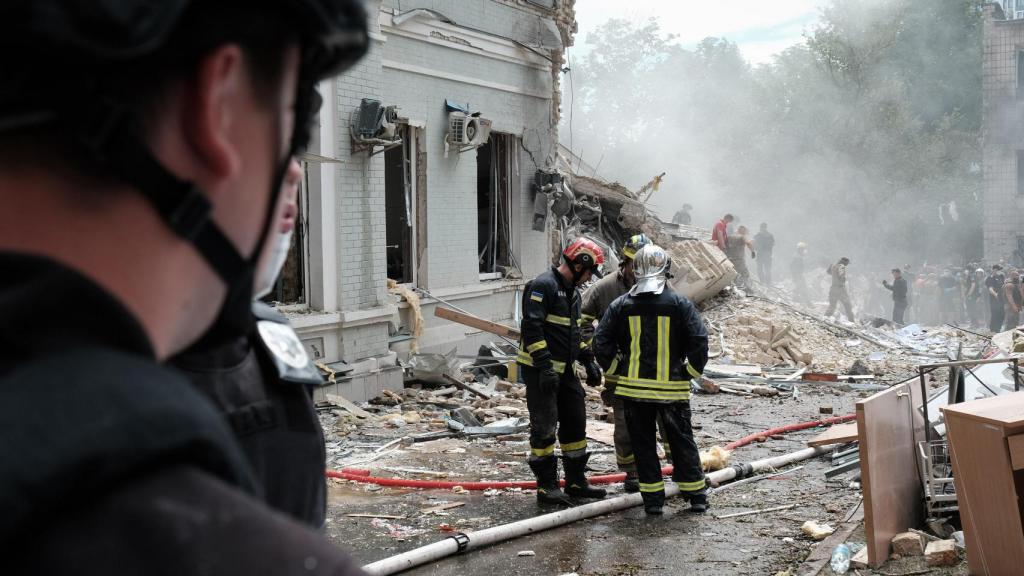
Ukrainian firefighters clear debris from a children’s hospital in kyiv following Russian bombing.
Maria Senovilla
Communications were disrupted after the explosion, and the electricity and water supply was interrupted. This put the lives of the most critical patients in serious danger. In the end, all of them had to be transferred. The less seriously injured children were carried in the arms of their relatives. In some cases, those who were connected to machines or in a more critical condition were sent to other centres in specialised ambulances.
Much of the oncology medicines intended for these children have also been lost, some of which are difficult to replace. And therapies that required specialised medication throughout the day have had to be interrupted, perhaps with fatal consequences for the little patients.
Bloody Monday
This massive and coordinated Russian attack – reminiscent of the early stages of the invasion – also hit the city of Dnipro, where Putin’s missiles killed 11 people and injured 68 others (including three 14-year-old teenagers).
There, as in the capital, Residential buildings, businesses and schools were blown up in the early hours of the morning.The Kremlin did not skimp on ammunition: ballistic missiles and the Kinzhal hypersonic missiles – which are particularly difficult to shoot down because they travel at 10 times the speed of sound – flew from Crimea and from Russian territory simultaneously.
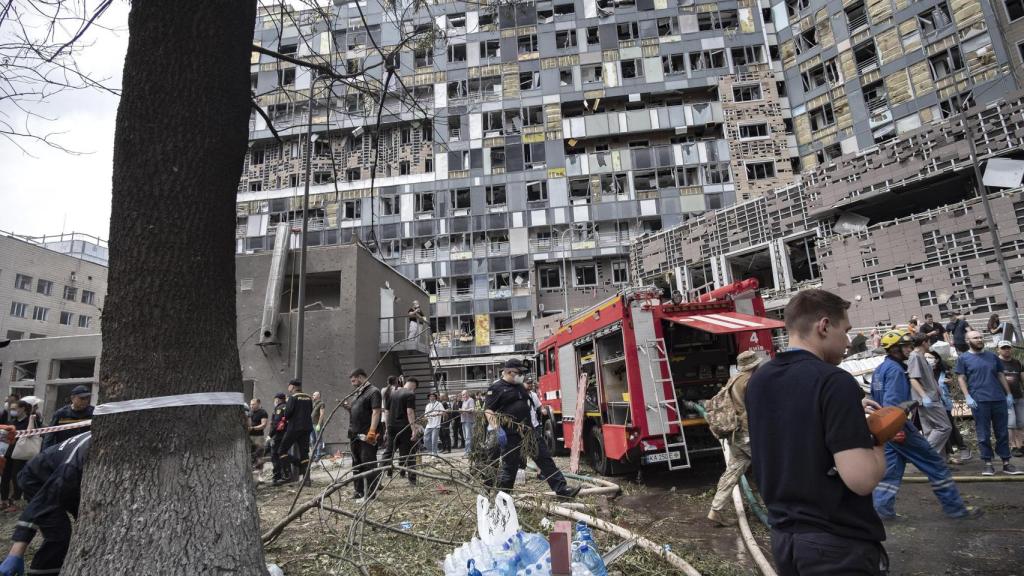
General view of the main building of the kyiv children’s hospital, which was also severely damaged by the Russian missile.
Maria Senovilla
The bloody toll they have left is 34 dead and more than 140 wounded. – figures that will probably increase in the coming hours. But the scars and emotional toll they have caused cannot be quantified: the pain experienced by Ukrainians has far exceeded that caused by the destruction of the energy infrastructure – which leaves them without electricity for hours each day – and even the pain that is palpable at the funerals of the soldiers who fall on the front lines every day.
The nerve center
In the capital alone, seven districts were affected. The children’s oncology hospital was not the only one bombed, another private centre was also hit. Among the residential buildings attacked, several went up in flames, which firefighters had not yet managed to extinguish by the afternoon. There were dozens of injured at the ‘Domino’ office centrewhere staff were already working at their posts at the time of the attack. A school, a pharmacy, the Professional School of Economics, and numerous commercial premises were also damaged.
In each of these places – listed as if they were the provinces of Spain – there were moments of panic and pain that were impossible to describe. In just one second, terror took over the lives of thousands of residents and workerswho felt the glass in each and every window around them shatter.
The columns of black smoke that rose above the skyline of this vast city on Monday morning, marking on the map the points where death and destruction were punishing the civilian population of a city that is trying to get by every day, will not be forgotten for a long time.

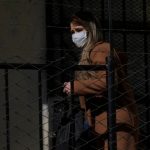









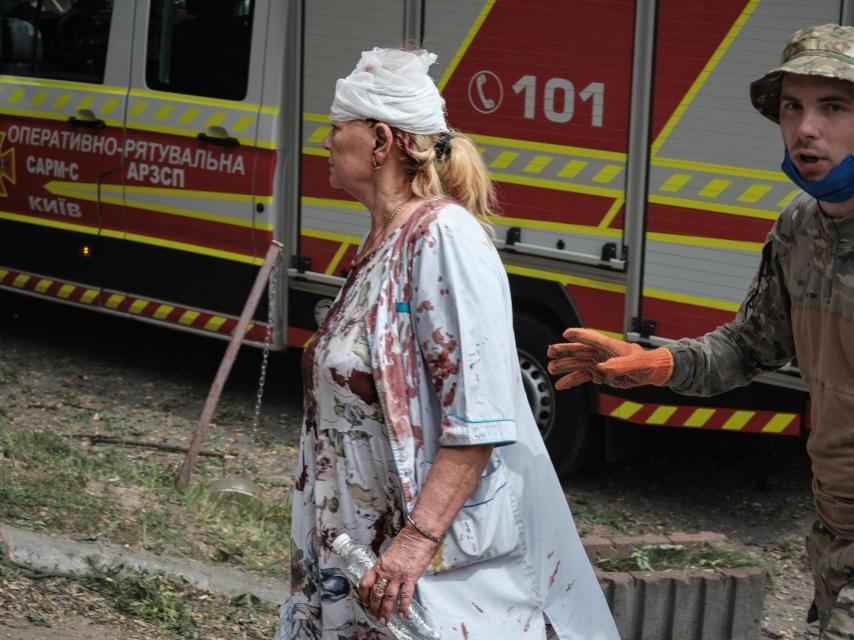

Add Comment